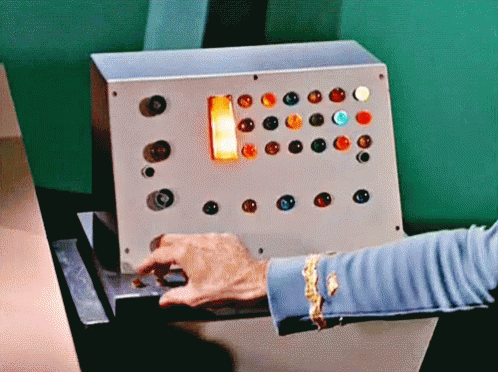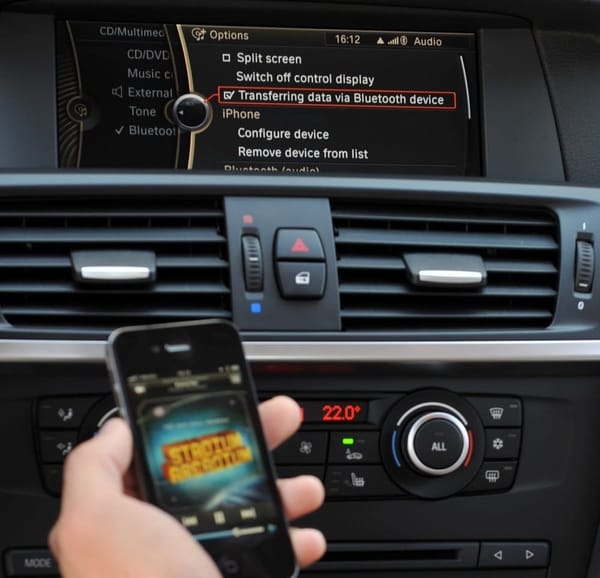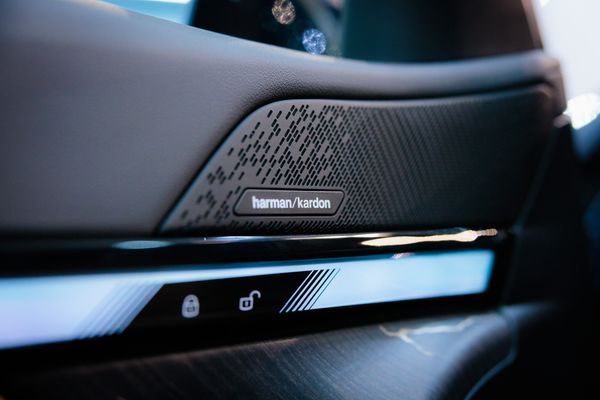BMW Limp Home Mode: Your Ultimate Guide

Alright, gearheads, buckle up! If you've ever been mid-rev and thought, "Why is my BMW acting like a moody teenager refusing to get out of bed?", you're in for a treat.
We're diving deep into the mysterious realm of BMW's Limp Home Mode.
Now, I know what you're thinking: "Is it a secret BMW feature that lets you drive like you're in a Bond movie?"
Not quite, but it's just as intriguing.
So, rev up your mental engines, because we're about to embark on a ride that's as thrilling as a twisty mountain pass, but with zero risks of scraping your alloy wheels.
Let's get started!
Understanding the Limp Home Mode Functionality
If you're the type of person who opens up the hood of your BMW more often than the fridge, then this section is going to be your jam.

If not, well, prepare to have your mind blown. Let’s dive into the heart of the matter and understand the genius (and madness) behind the Limp Home Mode.
Scope of Application in BMW
First things first, BMW isn't just throwing this feature on the engine and calling it a day.
Oh no, they're spreading the love across the entire drivetrain system.
Think of it as the safety net for your car's performance – from your engine to your transmission, transfer case, and even the rear differential.
It's like having a guardian angel watching over every part of your car, ensuring it gets you home safely even when things go south.
Specific Fault Triggers
Now, you're probably wondering, "What could possibly go wrong?" Well, quite a bit, actually.
Enter the Digital Motor Electronics (DME) and Digital Diesel Electronics (DDE) – the masterminds controlling your engine.
These systems are working with a virtual blueprint of what a perfect engine should be like.
But, let’s be real, nothing's perfect.
As engines face the wear and tear of the real world, the DME and DDE step in to keep everything in check.
The virtual engine model is like the gold standard, and every time the real engine strays from this ideal, these control systems make tweaks to get it back on track.
They're continuously adapting, ensuring that, for instance, all cylinders fire with the same gusto. But when one cylinder decides to slack off (maybe due to a clogged injector), the DME and DDE jump into action, making changes to keep everything running smoothly.
However, there's a limit to everything.
If one component's issue is too big to fix on the fly (with the help of adaptations, for example), that's when the Limp Home Mode gets activated. It's the system's way of saying, "Alright, something's not right. Let's take it easy and get you home safely."
Deep Dive: How Limp Home Mode Works
Alright, fellow car enthusiasts, grab your diving gear because we're about to plunge into the intricate depths of the Limp Home Mode.
It’s like understanding the psyche of a superhero – they're mighty and powerful, but every once in a while, they have to retreat and regroup.
Let’s unravel the drama that unfolds under that sleek hood of your BMW.
Case Scenario: The Tale of the Worn Ignition Coil
Imagine you’re cruising along, living your best life, foot firmly on the gas pedal, wind in your hair, and then... your ignition coil decides it's had enough.
It’s worn out, tired, and simply can't spark up the fuel mixture anymore. It's like trying to light a campfire in pouring rain.
Now, in this adrenaline-pumping scenario, the DME doesn't panic.
Instead, it senses the coil's struggle and recognizes a cylinder misfire. Instead of pushing the coil further, potentially causing significant damage, the DME plays it safe.
It's like a coach benching an injured player.
The cylinder is temporarily shut down to prevent any catastrophic engine damage.
But that's not all; turbochargers are also shut down because, let's be honest, there's no point in supercharging a cylinder that's taking a nap.
The result?
You enter the Limp Home Mode.
But don't despair!
Even in this mode, you've still got about 100 horsepower ready to serve. Sure, it's not the full-blown performance you're used to, but it's enough to get you home or to the nearest service station.
When Limp Mode Is More Than Just A Safety Net
While our worn-out ignition coil is a prime example, there are other times when the Limp Home Mode acts more proactively.
It doesn't always wait for a disaster to strike. If the DME detects something amiss, like an unmanageable boost in pressure or a sensor acting wonky, it might decide to play it safe and activate the Limp Home Mode.
In essence, it's the car's way of saying, "Hey, I sense something's off. Let's not push our luck. Time to take a breather."
It’s like your car has its own sixth sense, always on the lookout for potential threats and always ready to act in your best interest.
Diagnostic Procedures
Alright, Sherlock, it's time to put on our detective hats and embark on a quest to decode the mysteries of the Limp Home Mode. If cars could talk, diagnosing issues would be a breeze.
But since they can't, they communicate in their own unique language.
Let's decipher this car lingo and see how our trusty BMW tells us something's amiss.

The Art of the Diagnostic Threshold
Picture this: Every component in your BMW has its own 'comfort zone' – a range within which it operates at its best. But, just like us after a particularly heavy holiday meal, sometimes these parts can stray out of their comfort zone.
This is where the diagnostic threshold comes into play. It's like the boundary line that tells the system, "Hey, we're veering off course here."
When a component's value crosses this threshold, it sets off an alarm in the form of a diagnostic trouble code (DTC) in the control module. Think of it as the car's SOS signal.
Action and Reaction: The Car's Safety Net
Once the DTC is triggered, the control module doesn't just sit around twiddling its virtual thumbs.
Depending on the severity of the fault, it takes preprogrammed measures. This could range from minor adjustments to, you guessed it, activating the Limp Home Mode.
It's like your car has its own internal triage system. It assesses the situation, determines the severity, and then takes the necessary steps to ensure your safety and the well-being of the engine and other components.
In The Trenches: Practical Diagnosis
While our BMW does a stellar job at self-diagnosing, sometimes you'll need to dig a bit deeper to understand the root of the problem.
Modern diagnostic tools can tap into the car's control module, fetch the DTCs, and give you a clearer picture of what's going on. Armed with this information, you can decide on the best course of action, whether it's a quick fix or a trip to the service center.
Recognizing Limp Mode
Alright, adventurers, let's imagine for a moment that your BMW is a bit like a theatrical drama actor.
When things are off-script, it won't keep silent.
Instead, it’ll give a performance, dropping hints and cues, hoping you catch on. So, how do we decipher these cues and figure out when our car has slipped into Limp Home Mode?
Let’s uncover these telltale signs.
The Symphony of Symptoms
Limp Mode isn't exactly shy. When it's active, your BMW might showcase a variety of signs:
- Power reduction: Think of it as your car being on a strict diet, cutting down on the horsepower calories.
- Odd transmission behaviors: If your car suddenly seems confused about which gear it should be in, it's probably a sign.
- Warning galore: The EML light might pop on, or you could be greeted with a check engine light. And then there are those ominous drivetrain malfunction warnings or transmission malfunction alerts. They're like the car's version of a fever, signaling that all's not well.
The Silent Treatment
But here's the twist in our drama: While these symptoms scream for attention, there's no direct "Limp Mode Active!" signal.
Yep, your car might give you the silent treatment, relying on you to connect the dots.
Think of it as a sophisticated game of charades, where you're guessing what the car's trying to communicate.
Resetting the Drama
One silver lining in our ongoing drama?
Limp Home Mode isn't permanent.
It's like a scene in a play that can be reset.
Every time you cycle the ignition off and back on, you give the system a fresh start. But remember, while the performance might resume, the underlying issue still needs addressing.
Ignoring it is like putting a band-aid on a wound that needs stitches.
Common Causes of Limp Home Mode Activation
Alright, gearheads, let's dive into the meat and potatoes of this Limp Home Mode saga. Think of your BMW as a symphony, with each part playing a vital role. If one instrument goes off-key, it could throw the whole performance into chaos.
Similarly, if one component in your BMW goes haywire, it might trigger the Limp Home Mode. Let’s explore the common culprits behind this dramatic turn of events.
1. Cylinder Misfire
- The Drama: When a cylinder decides to go on a mini-vacation and stops producing power.
- The Culprits: Bad spark plugs, misbehaving ignition coils, rogue injectors, leaky intake valves, or those sneaky intake vacuum leaks. And let’s not forget the villainous faulty high-pressure pumps.
- The Consequence: A severe cylinder misfire might lead the Limp Mode to bench the affected cylinder, preventing further damage.
2. Low Fuel Pressure
- The Drama: Think of it as your engine's version of low blood pressure.
- The Culprits: The notorious high-pressure pump (HPFP), which has been a headache-inducer since its debut.
- The Symptoms: Gasoline-powered BMWs might take their sweet time cranking up. Diesel engines? They might just cut the power mid-drive.
3. Turbocharger Control
- The Drama: When the engine's boost goes overboard or doesn't show up to the party at all.
- The Culprits: Misbehaving wastegate or vane control actuators, leaks in the boost pressure, intake vacuum leaks, or sensors throwing tantrums.
- The Outcome: The engine might just decide to ditch turbocharging altogether, operating like a naturally aspirated engine till you sort things out.
4. Valvetronic Faults
- The Drama: BMW's unique way of controlling engine power, which sometimes faces hiccups.
- The Culprits: Dodgy wiring connections, software glitches, or, on rare occasions, worn-out gears of eccentric shafts.
- The Backup: Even if the Valvetronic motor fails completely, there are backup mechanisms in place to keep the engine running.
5. Vanos Faults
- The Drama: The VANOS system, responsible for variable valve timing, sometimes gets moody.
- The Culprits: Broken gear bolts, software errors, or those pesky Vanos solenoids.
- The Outcome: A check engine light or, in extreme cases, a trip into Limp Home Mode.
6. Sensor Faults
- The Drama: These are the eyes and ears of the engine, and when they misbehave, it can lead to all sorts of chaos.
- The Culprits: Malfunctioning airflow meters, oxygen sensors, or boost pressure sensors.
- The Backup Plan: The engine might continue running by employing average data, but with some restrictions.
So, there you have it. The common reasons your BMW might decide to take a dramatic pause with Limp Home Mode. Remember, it's the car's way of saying, "Hold up, something's not right.
Let's slow things down until we figure it out." Always pay attention to these signals and address the root cause to ensure your ride remains smooth and drama-free.
Conclusion
There you have it, road warriors – the rollercoaster ride of understanding the Limp Home Mode in all its glory. Think of it as a safety net, a backup dancer, or that reliable friend who steps in when things get dicey.
While the reasons for its activation can be as varied as the notes in a symphony, the underlying message is consistent: your BMW is looking out for you.
However, it's essential to remember that while Limp Home Mode is a protective mechanism, it's not a solution. It's like your car raising a flag, signaling that there's an underlying issue that needs your attention. Ignoring these signs can be akin to brushing off the warning signals of a brewing storm.
So, the next time your BMW gives you those subtle (or not-so-subtle) hints that it's in Limp Home Mode, don't panic.
Instead, acknowledge it, diagnose the issue, and take corrective action. After all, cars, like any relationship, thrive on care, understanding, and timely intervention.
Here's to many more smooth rides, minimal drama, and a deeper bond with your ultimate driving machine!





